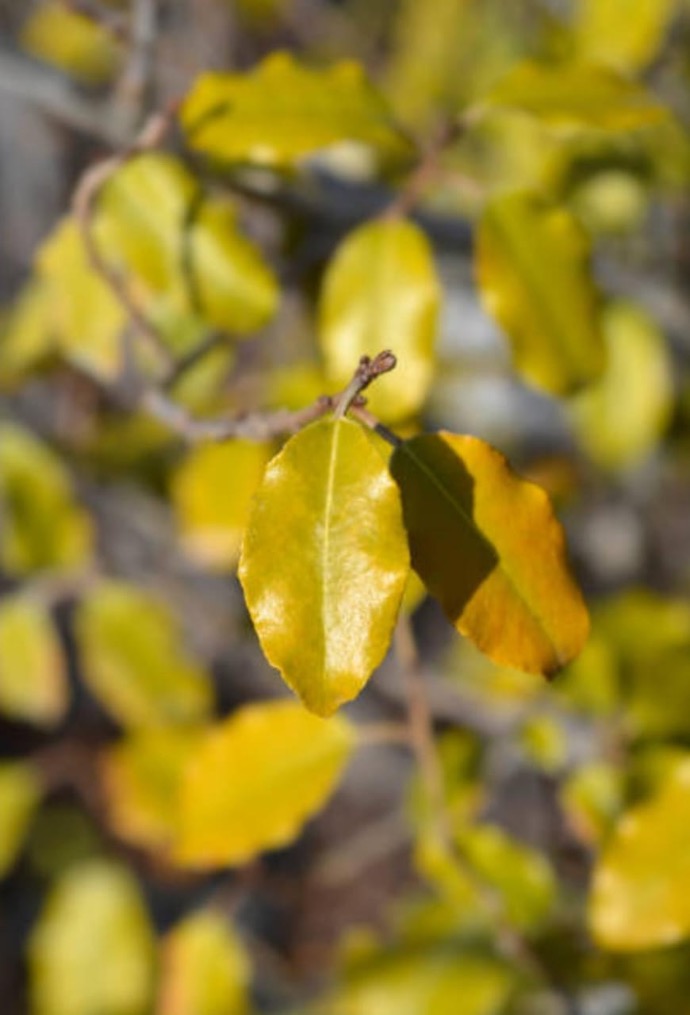Silverberry
Silverberry shrubs, 8-15 feet tall in Zones 2-7, exhibit fast growth in well-drained soil and full sun to partial shade. Known for their silver-gray foliage, silverberries produce small and edible fruits.
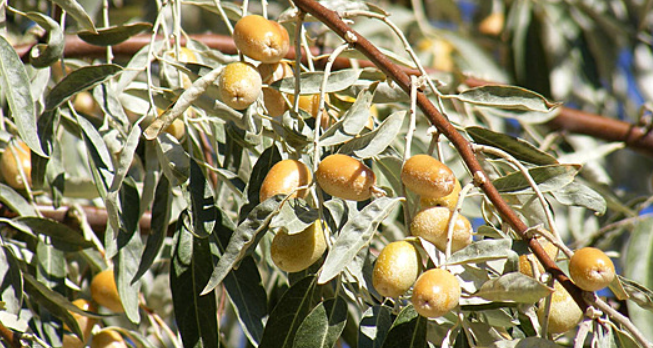
Habit
Shrub
Height
3-6 m
Growth
Fast
Soil
Well-drained, loamy
Shade
Full Sun to partial shade
Moisture
Moist
Edible
Yes
Medicinal
Yes
Origin
North America
Climatic Condition
Temperate, Subtropical
Temperature (°)
-10 to 30°C
Humidity (%)
50-70%
Potting media
Loamy, peat
Fertilizers
Organic, balanced NPK
Watering
Moderate
Plant Weight
300-500 g
Flowering Time
Spring, Summer
Soil Ph level
6.0 - 7.5
Water Ph level
6.0 - 7.0
Soil EC
1-2 dS/m
Yield Per Plant
Ornamental, medicinal
NPK ratio
10:10:10
life Span
Perennial
Health Benefits
Medicinal, ornamental
Suggested Grow Media or Potting Mix ?
50% loam, 25% compost, 25% sand
Suggested Fertigation/Fertilizers
Fertilize every 4 weeks with a balanced fertilizer.
Common Diseases and Remedies
Rust
causing orange brown pustules on leaves
proper sanitation
HEALTH BENEFITS
· Berries are rich in antioxidants, beneficial for heart and immune health.
· Contains anti-inflammatory compounds that may support joint health.
What Is An Silverberry plant?
Elaeagnus, silverberry or oleaster, is a genus of about 50–70 species of flowering plants in the family Elaeagnaceae.
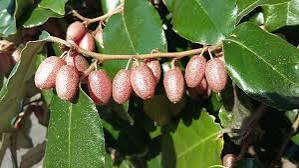
What Are The Different Types Of Silver berry Plants?
Elaeagnus x ebbingei (Ebbing's Silverberry): This is one of the most popular silverberry varieties, known for its dense, evergreen foliage with silvery-gray undersides. It produces small, fragrant, creamy-white flowers in fall.
Elaeagnus pungens (Thorny Olive): This variety is characterized by its spiny branches and leathery, silver-green leaves. It produces small, fragrant, silvery flowers in fall.
Elaeagnus angustifolia (Russian Olive): While not a true olive, this variety is often called Russian olive due to its similar appearance. It has silvery-green leaves and produces small, yellow flowers followed by silver fruits.
Elaeagnus commutata (Silverberry): This North American native species is known for its silvery leaves and small, fragrant, silver-white flowers. It produces red fruits that are edible but tart.
Elaeagnus macrophylla (Large-leaf Silverberry): This species has large, silver-green leaves and produces small, fragrant, yellowish-white flowers in spring.
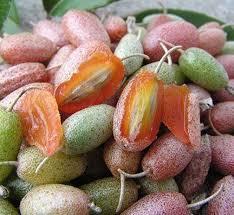
Location
Silverberry bushes need full sun to light shade, and well-drained, moist to rather dry soil. This fast-growing, drought-tolerant shrub is an ideal choice for dry banks, commercial, high-traffic areas, or as a hedge.
Sunshine
Silverberry shrub likes sufficient sunlight, but can also grow in slightly shady environments. It grows best in an open space with over 3 hours of sunlight daily. If light conditions are poor, it won't grow healthily. Shade it from direct sunlight in hot summers to avoid withering from the blazing sun.
Soil
Plants also are wind resistant and tolerate temperatures down to about -40°C. Although it grows best in loamy soils, American silverberry is commonly found in dry, sandy or gravelly soils, including those highly susceptible to erosion. The species occurs over a wide range of elevation (300-8000 feet).
Hydration
Silverberry needs 0.8 cups of water every 9 days when it doesn't get direct sunlight and is potted in a 5.0" pot.
Nourishment
Silver Berry has an impressive amount of nutritional benefits. They hold a perfect amount of calories. It is calculated to be 68Cal, 3.1g carbohydrates, 0.23g of protein, 0.36g dietary fiber, and 0.04g of fat in 18g of Silverberries while it is rich in vitamins, minerals, and antioxidants.
Issues
There were high chances of getting pests and diseases while cultivating this crop.
Benifits
Silverberries are most often eaten fresh, with sugar or used to make a sweet beverage. The sour flavor of Silverberries is countered and complimented by the addition of sugar or other sweeteners. Silverberries can be used to make juice and syrups which can be added as a flavor for sodas.
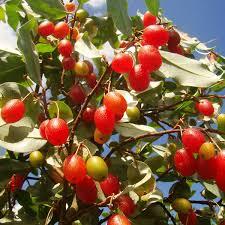
FAQs About Growing Areca Palms
What does Silverberry smell like?
The scent is deliciously pungent with lasting overtones of lemon and ginger that hang languidly in the air.
What are the leaves of Silverberries?
Leaves are deciduous, simple, alternate, 2-10 cm long, ovate to oblong or ovate- lanceolate, wedge-shaped at base, short petioled, both surfaces covered by minute, silver scales, sometimes with scattered brown scales beneath.
How do you identify Silverberries?
Shrubs with twigs that have white-mealy hairs (trichomes), becoming gray. Leaves are alternately arranged, ovate to elliptic, white-mealy above, and silvery below. Twigs lack thorns. Fruits are silvery-green and dry (olive-like).
How do you propagate Silverberries?
Propagate elaeagnus by taking semi-ripe cuttings in summer. Semi-ripe cuttings are made using the current year's stems, when they are woody at the base and soft at the tip. Cut them down to a around 5cm and remove the lower leaves, then push them into a pot of gritty, yet moist compost.
What is Silverberry good for?
Wild silverberry also has numerous health benefits for the cardiovascular and immune system because it is rich in antioxidants (flavonoids, lycopene, and carotenoids) and vitamins A, B1, B12, C, E, and K. While omega 3 fights chronic inflammation, omega 7 serves a different purpose

